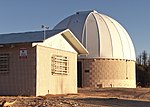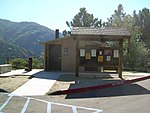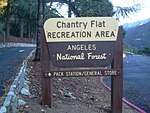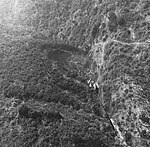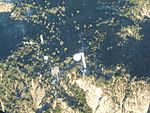San Gabriel Wilderness

The San Gabriel Wilderness is a wilderness area created in 1968 of more than 36,118 acres (150 km2) within the Angeles National Forest and San Gabriel Mountains National Monument. The area lies on the southern slopes of the San Gabriel Mountains, between the Angeles Crest and the West Fork of the San Gabriel River.The area was originally set aside as the Devils Canyon-Bear Canyon Primitive Area of 35,000 acres (140 km2).The San Gabriel Mountains were first preserved by the federal government in 1892 as the San Gabriel Timberland Reserve, established by U.S. President Benjamin Harrison and influenced by California conservationists, Abbot Kinney and John Muir. This forest reserve would later become part of the Angeles National Forest in which the San Gabriel Wilderness is now located.
Excerpt from the Wikipedia article San Gabriel Wilderness (License: CC BY-SA 3.0, Authors, Images).San Gabriel Wilderness
Geographical coordinates (GPS) Address Nearby Places Show on map
Geographical coordinates (GPS)
| Latitude | Longitude |
|---|---|
| N 34.246666666667 ° | E -117.98555555556 ° |
Address
Los Angeles County
California, United States
Open on Google Maps


